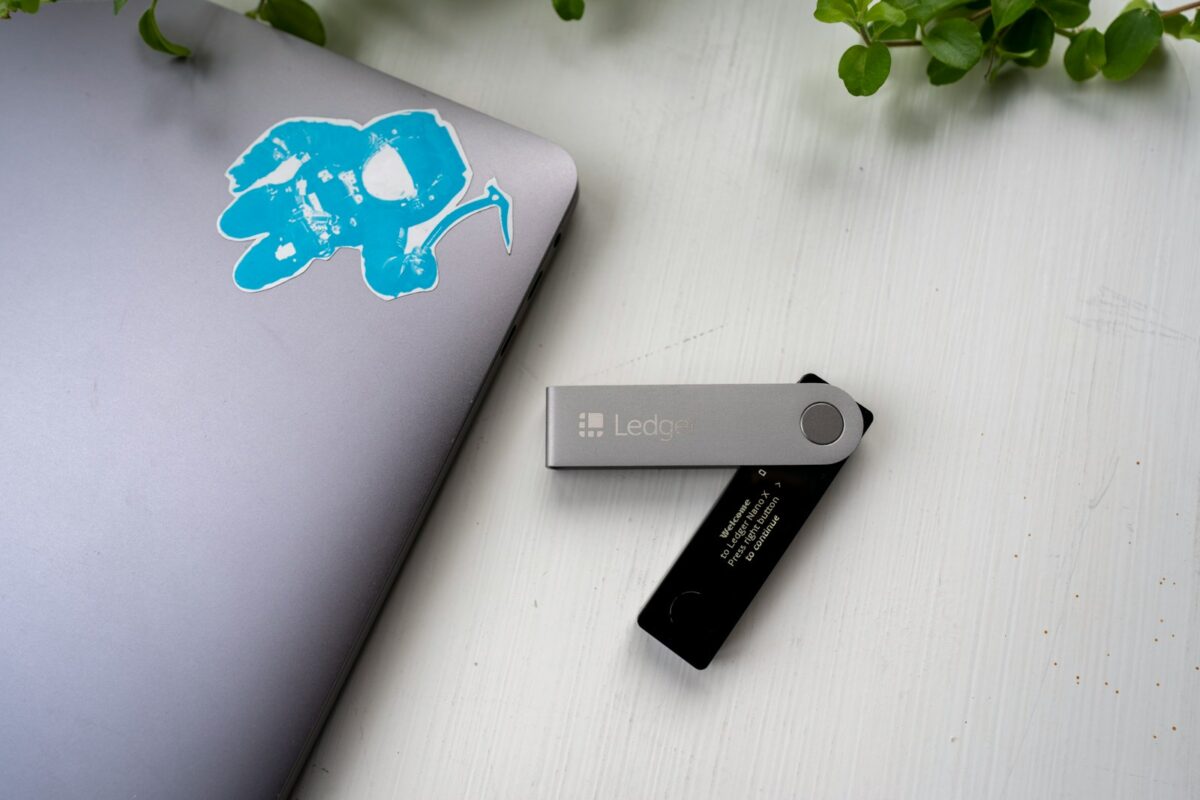
Hardware wallet guide

Begin configuring your cold storage device by carefully following the manufacturer’s setup instructions to generate a secure private key offline. This process isolates sensitive cryptographic material from internet exposure, dramatically reducing hacking risks. During initialization, write down the recovery seed phrase exactly as presented; this backup is the only method to restore access if the device is lost or damaged.
Storage of the recovery seed demands strict physical security measures. Use fireproof and waterproof materials for seed backups, and consider multiple geographically separated copies to mitigate local disaster threats. Avoid digital copies or photographs to prevent remote breaches. Understanding these precautions transforms abstract security concepts into practical protective steps for safeguarding assets.
The cold nature of this storage medium means private keys never leave the device unencrypted, providing robust protection against malware and phishing attacks common in hot environments. Experiment with test transactions on low-value amounts after initial setup to build confidence in transaction signing workflows without risking significant funds. Such hands-on trials reveal how offline signing integrates seamlessly with online broadcast tools while maintaining uncompromised key secrecy.
Hardware Wallet Guide
Secure storage of private cryptographic keys requires specialized devices designed to isolate sensitive data from online threats. A dedicated cold storage device provides a controlled environment where keys never leave the secure element, minimizing exposure to malware or phishing attacks. Initial setup involves generating a seed phrase on the device itself, ensuring that keys are created in an offline context and reducing risks associated with software-based key generation.
Backup strategies constitute a vital part of maintaining long-term access and security. The recovery phrase, typically 12 to 24 words, must be stored physically and separately from the device to mitigate risks of loss due to damage or theft. Many experts recommend using engraved metal backups instead of paper to withstand environmental hazards such as fire or water damage. Proper backup procedures require verification steps during setup to confirm accuracy and completeness.
Technical Setup and Security Measures
The onboarding process for these secure key storage units generally follows a standardized protocol: user initialization, PIN code creation, seed generation, and optional passphrase addition. Each step adds layers of protection against unauthorized access. For example, PIN codes protect against physical tampering, while additional passphrases can create hidden wallets within the same device.
Security architectures rely heavily on hardware isolation combined with cryptographic verification. Devices employ secure enclaves that perform signing operations internally without ever exposing private keys externally. This concept is analogous to air-gapped computers but more practical for daily use due to compact form factors and integrated user interfaces such as OLED screens for transaction validation.
- Cold Storage: Complete offline operation during key generation and transaction signing.
- Recovery Process: Seed phrases allow restoration on compatible devices if the original unit is lost.
- User Authentication: Multi-factor authentication via PINs and passphrases enhances defense layers.
A scientific examination reveals that firmware integrity checks are essential in preventing supply chain attacks or unauthorized modifications post-manufacture. Verified boot sequences ensure that only signed firmware runs on the device, preserving trustworthiness throughout its lifecycle.
The exploration of these mechanisms encourages experimentation with testnets before committing significant assets. Users can simulate transfers and observe how isolated signing safeguards assets despite compromised host environments. Such practical investigations build confidence in understanding the interplay between hardware isolation principles and cryptographic protocols foundational to blockchain security models.
Choosing Right Hardware Wallet
Selecting an optimal cold storage device requires prioritizing secure key management and ease of initial setup. Devices that offer robust encryption methods combined with intuitive configuration steps reduce the risk of user error during the critical onboarding phase. For example, some models implement secure element chips to isolate private keys physically, enhancing protection against physical tampering while simplifying backup creation.
Storage capacity and supported cryptocurrencies also influence decision-making. While most secure devices handle multiple asset types, verifying compatibility with specific tokens or blockchain networks is necessary before acquisition. Certain units provide expandable memory or customizable firmware updates, allowing users to adapt their device to evolving portfolio needs without compromising security protocols.
Technical Aspects in Setup and Backup Procedures
Establishing a device involves generating a seed phrase offline, which functions as the ultimate recovery mechanism. A thorough procedural approach includes writing down this mnemonic on durable media resistant to environmental hazards rather than digital storage vulnerable to cyberattacks. Experimental studies show metal seed backups resist fire and water damage far better than paper alternatives, significantly increasing long-term resilience.
Backup routines must be executed meticulously; partial or corrupted backups jeopardize future asset retrieval. Some solutions integrate multi-factor authentication during setup, adding layers of verification that prevent unauthorized access even if physical possession occurs. Analyzing these mechanisms through penetration testing reveals the effectiveness of layered defenses in thwarting extraction attempts from compromised environments.
Security architecture plays a pivotal role beyond physical safeguards. Open-source firmware audited by independent researchers often provides higher transparency regarding potential vulnerabilities compared to proprietary closed-source systems. Cross-referencing community audit results with manufacturer documentation aids in selecting devices with proven resistance to firmware-level exploits or side-channel attacks.
Comparative assessments highlight user interface design as another critical factor impacting operational security. Clear, stepwise instructions minimize misconfiguration risks during initial device activation and daily usage. Cases where complex navigation led to skipped verification steps demonstrate how usability directly correlates with maintaining a secure environment for key storage and transaction authorization processes.
Setting Up Device Securely
Prioritize initializing the device in an offline environment to maintain cold storage integrity. During setup, generate cryptographic keys directly on the device without any network connection, preventing potential interception or remote exploits. Utilize manufacturer-recommended procedures ensuring that no external systems access the seed phrase or private key during creation.
Create a physical backup of the recovery seed immediately after initialization, using durable materials such as metal plates resistant to fire and water damage. Storing this backup separately from the device mitigates risks associated with loss, theft, or hardware failure. Avoid digital copies or photographs of recovery data to reduce attack surfaces.
Optimizing Secure Configuration and Recovery Procedures
Configure additional security layers available on the device, such as PIN codes or passphrase encryption, which provide multi-factor protection beyond seed-based authentication. Experimenting with passphrases enables users to create hidden accounts within the same hardware unit, enhancing privacy through plausible deniability mechanisms.
Test recovery workflows by simulating restoration on a secondary unit or emulator before relying solely on the primary device. This process confirms that backup material is accurate and complete while familiarizing users with steps needed to regain access after loss scenarios. Document variations in recovery protocols across different firmware versions to anticipate procedural adjustments.
Transferring Crypto Safely
To ensure the secure transfer of digital assets, it is imperative to initiate operations through a dedicated physical device designed specifically for private key protection. Such apparatuses isolate cryptographic keys from internet exposure, drastically reducing vulnerability to remote attacks during transactions. Prior to sending funds, verify that the storage device is properly initialized with a robust setup procedure, including firmware updates and PIN configuration, to maintain integrity throughout the process.
Maintaining an up-to-date backup of the secret recovery phrase is a fundamental security measure. This mnemonic sequence enables restoration of access if the primary apparatus is lost or damaged. Store this information offline in a tamper-evident medium separate from the device itself. Avoid digital copies or cloud services for backup, as these increase attack surface and risk interception by malicious actors.
Key Elements for Secure Asset Transfer
Transaction execution must always be confirmed directly on the cryptographic key storage unit’s interface. This step serves as a final verification layer, preventing unauthorized instructions injected through compromised computers or networks. Multiple studies demonstrate that bypassing this confirmation increases susceptibility to malware-induced theft.
Address accuracy is non-negotiable during fund transmission. Manual entry errors can cause irrevocable loss; therefore, employ QR scanning or copy-paste functions verified against device displays. Some advanced devices integrate address checksum validation algorithms that alert users about typographical mistakes before approving transfers, enhancing transactional reliability.
The isolation capabilities of dedicated key management devices extend beyond signing transactions – they also play a vital role in mitigating phishing attacks and fraudulent software wallets. Employing such equipment within operational protocols complements broader cybersecurity frameworks by introducing hardware-enforced trust anchors resistant to remote compromise.
Finally, review transaction parameters including gas fees and network congestion indicators prior to approval on your secure element. Real-time monitoring tools combined with hardware signing offer empirical control over cost-efficiency without sacrificing safety. Experimental case analyses confirm that integrating these practices reduces operational risks while maintaining seamless user experience during asset migration tasks.
Recovering Wallet From Seed
The most reliable method to restore access to a cold storage device is by using the seed phrase generated during the initial setup. This mnemonic phrase acts as a master key, enabling full recovery of private keys and associated assets without physical access to the original device. Ensuring precise input of each word in the correct sequence is imperative for successful restoration, as even minor errors can lead to failure or incorrect wallet derivation.
During recovery, it is advisable to perform operations offline or within an isolated environment to maintain maximum security. Devices designed for secure asset management typically offer dedicated recovery modes that prevent exposure of sensitive data. Using such specialized equipment reduces risks related to malware or network attacks targeting seed entry procedures.
Step-by-Step Recovery Process and Security Considerations
Begin by selecting a trusted cold storage interface that supports seed phrase import compatible with your original setup protocol (e.g., BIP39, SLIP39). Follow manufacturer instructions carefully, verifying each input against your backup documentation. It is important that the backup itself was stored securely–preferably physically separated from the device–to mitigate loss or theft scenarios.
In practice, users have reported success by leveraging air-gapped hardware modules combined with manual verification techniques such as cross-referencing checksums or partial mnemonic confirmations. For example, one documented case involved reconstructing a multi-signature arrangement from distributed seeds stored across separate geographical locations, highlighting both resilience and complexity inherent in cold storage recovery.
- Verify seed phrase integrity before initiating restore
- Use verified firmware versions on recovery devices
- Avoid connecting recovered devices directly to online networks until complete validation
- Perform multiple test transactions post-recovery to confirm operational status
The underlying cryptographic standards rely on deterministic key generation algorithms; therefore, proper seed entry reproduces exact private keys without deviation. Careful adherence to backup protocols preserves asset control even after loss or damage of primary storage media. Experimental approaches combining physical security layers with software audits continue to refine best practices in this domain.
Maintaining Firmware Updates: Ensuring Robust Cold Storage Security
Regularly updating the firmware of your cold storage device is a decisive step to preserve the integrity and security of cryptographic key management. Ignoring updates exposes the system to vulnerabilities that attackers can exploit, including firmware-level exploits and backdoors which bypass conventional safeguards.
Before initiating any upgrade, confirm that a comprehensive backup of your recovery seed is securely stored offline. This precaution safeguards against potential data loss caused by update failures or unexpected device malfunctions, ensuring uninterrupted access to assets.
Key Technical Insights and Future Directions
- Firmware Validation Mechanisms: Modern devices implement cryptographic signatures and secure boot processes that verify authenticity before applying updates. Experimenting with these protocols reveals how tamper-resistant architectures enhance trustworthiness in decentralized storage solutions.
- Update Delivery Channels: The shift toward air-gapped or USB-only update methods limits exposure to network-based attacks. Investigate how isolated update paths reduce attack surfaces and what implications this has for user convenience versus security trade-offs.
- Automated Rollback Features: Some models incorporate rollback capabilities allowing reversion to previous stable firmware versions if anomalies arise. Testing rollback procedures can provide confidence in recovery options without compromising ongoing operations.
- Post-Update Verification: Verifying post-update functionality through challenge-response authentication or transaction signing tests confirms successful installation and operational continuity, encouraging adoption of rigorous validation routines.
The evolution of decentralized asset storage demands continuous innovation in firmware lifecycle management. Upcoming developments may include zero-trust update frameworks leveraging blockchain-based attestation services, enhancing transparency around code provenance and update legitimacy.
Exploring cross-device compatibility standards could streamline multi-vendor ecosystem integration, enabling users to manage multiple cold repositories under unified security policies while preserving individualized control over private keys.
This approach fosters resilience within personal custody environments by combining stringent security protocols with practical usability enhancements–advancing both theoretical understanding and hands-on mastery of safeguarding digital wealth long-term.


